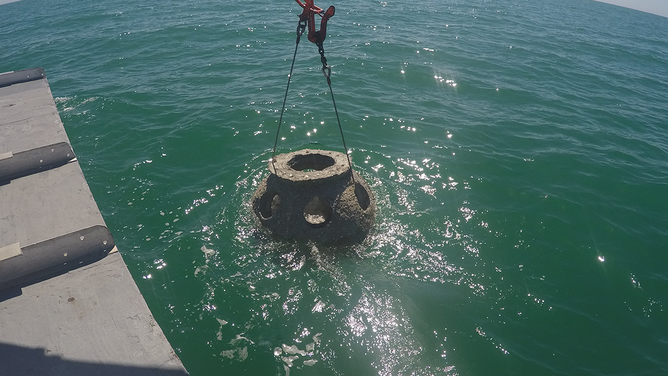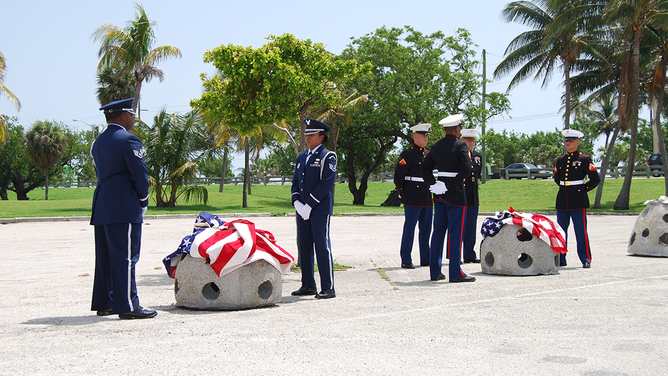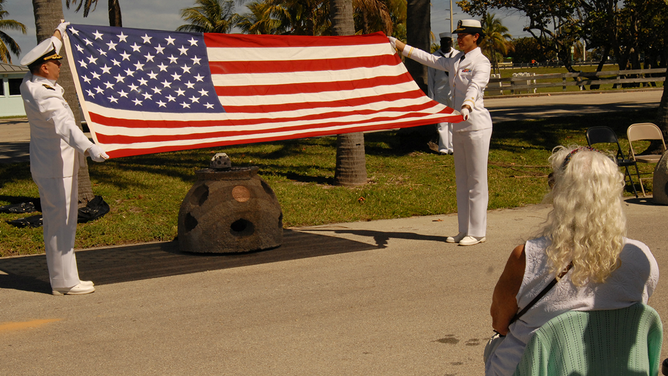Looking to go green when it’s your time to go? Become a coral reef
Most people opt for a traditional burial or cremation, but both options can pose hazards to the environment
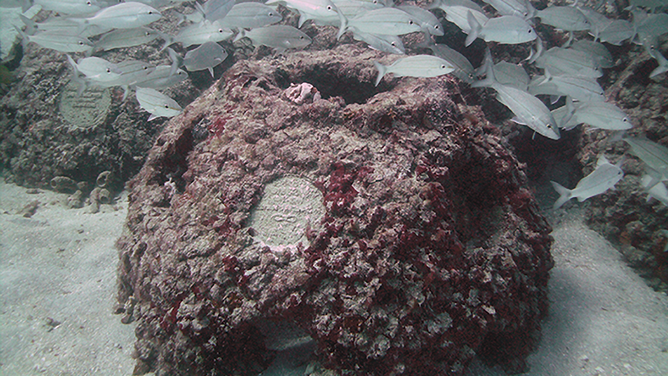
Photo Credit: Eternal Reefs
We don't like talking about it, but there's no escaping it -- we're all going to die.
Trying to decide what to do with your body is an uncomfortable conversation to have, but it's necessary so family and friends know what your final wishes are.
Most people opt for a traditional burial or cremation, but both options can pose hazards to the environment.
According to the Natural Death Centre, one cremation uses as much gas and electricity as a 500-mile road trip and releases 400 kilograms (881 pounds) of carbon dioxide into the atmosphere. That's a staggering amount considering the average human exhales about 2.3 pounds of CO2 in one day, depending on their activity level.
And a traditional burial also harms the environment.
According to Scientific American, in addition to land set aside for graveyards, building caskets require 30 million board feet of wood and 90,000 tons of steel every year.
And that's not all.
Building burial vaults require 1.6 million tons of concrete. It's also estimated that 800,000 gallons of embalming fluid are used every year.
Here are a few options to make your final act on Earth more eco-friendly:
Memorial reefs
Being laid to rest at sea has been a practice for as long as people have been exploring our oceans. And until recently, the only way to do that was by placing a person's body in the water or scattering their remains.
A memorial reef is another unique, environmentally-friendly option.
Eternal Reefs was created after divers saw the decline of coral reefs in the Florida Keys. The divers developed a 'reef ball' to help restore and protect the ocean's naturally occurring reef structure.
The reef balls are made of environmentally safe, marine-grade concrete placed on the ocean floor to create marine habitats for fish and other forms of sea life.
The cremated remains of a person (or pet) and incorporated into the cement mixture designed to create the artificial reef formation. It's then placed in one of Eternal Reef's permitted ocean locations along the East Coast and the Gulf of Mexico selected by the person or their loved ones.
Family and friends are invited to participate in the casting, personalization and viewing before the Eternal Reef is placed on the ocean floor. And during the viewing, military honors are presented to families of servicemen and women.
As of 2020, Eternal Reefs said more than 2,000 reef balls had been placed in about 25 different locations.
Infinity burial suit
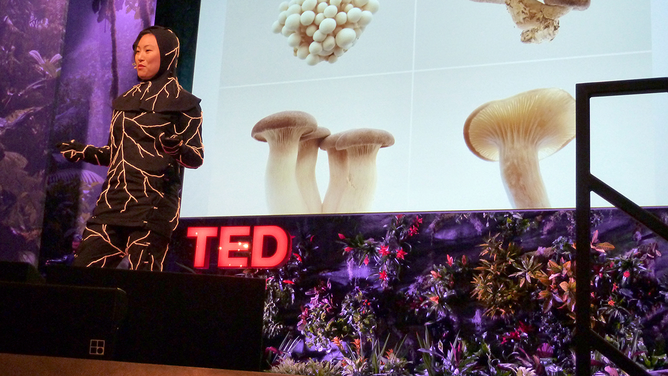
( Photo Credit: Coeio.com)
The Infinity Burial Suit is a handcrafted garment that is worn by someone who has died. The suit is made up of mushrooms and other microorganisms that aid in decomposition, works to neutralize toxins in the body and then transfer nutrients to plant life, according to Coeio.
After a while, the body is broken down and transformed into nutrients that enrich the Earth and create new plant life.
Actor Luke Perry died in 2019 and his family honored his wishes of burying him in an Infinity Burial Suit from Coeio.
Aquamation

Photo by J K on Unsplash
Aquamation is a process that uses water instead of fire as an alternative to cremation or burial. Scientifically, the process is called alkaline hydrolysis and uses a solution of 95 percent water and 5 percent alkali. According to Bio-Response Solutions, the combination of water flow, temperature, and alkalinity is used, which accelerates the breakdown of organic materials.
When the process is complete, all that remains are the inorganic materials of bones, which is pure calcium phosphate.
The remains are then allowed to dry and are pressed into a powder that is returned to loved ones.
Body farms
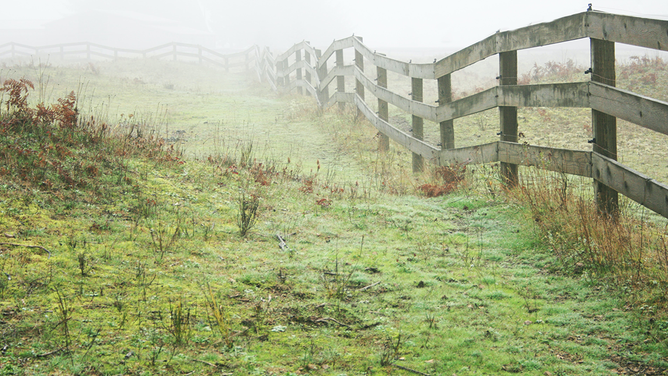
Photo by Jan Canty on Unsplash
It may sound unsettling to hear someone will be laid to rest in a "body farm," but it's all in the name of research.
One of the most well-known body farms in the country is located at the University of Tennessee Forensic Anthropology Center in Knoxville.
Established by Dr. William M. Bass, the center started with a small area of land but has since grown into one of the leading institutions for forensic anthropology research and training.
Forensic anthropology examines human skeletal remains to help determine the identity of unidentified human remains, interpret trauma and estimate the time since death, according to UTK.
The body donation program currently compromises more than 1,800 people in the Bass Collection and more than 4,000 registered future donors. The program receives approximately 100 donations every year.
Tree pod burial

Photo by Johannes Plenio on Unsplash
Another way to honor a departed loved one is by placing their remains into an eco-friendly egg-shaped pod, burying it and planting a tree on top.
Bodies are put into the fetal position in larger pods, or cremated remains can be placed into a small egg-shaped biodegradable urn. Then a tree that the person has chosen before they die is planted on top to serve as a memorial.
Capsula Mundi makes the urns with a plastic-like material derived from organic materials and has a low environmental impact. Over time the remains will break down inside the Earth and provides nutrients for the tree to grow and thrive.
Space burial
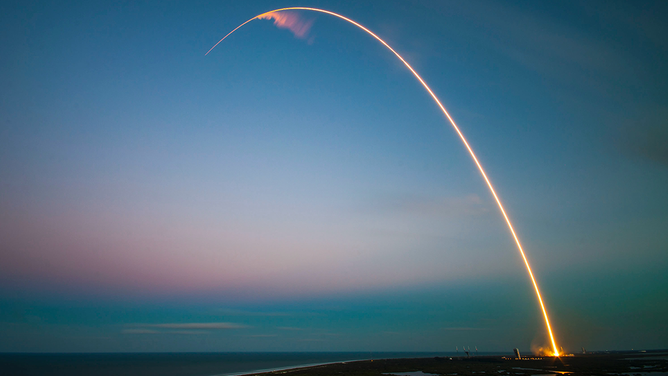
Photo by SpaceX on Unsplash
If you're looking for a unique way to honor a loved one after they die, you could also consider sending their remains into space.
Beyond Burials is a company created by Dan Peabody as a way to honor his uncle that passed away. A person can choose from four different memorials after they die.
Starlight Memorial: Beyond Burials will launch the remains of you or your loved one up to 80 miles through the sky and into space. When the rocket reaches a pre-determined altitude, the remains are deployed and remain for up to six minutes before descending back to Earth.
Shooting Star Memorial: This option will launch remains to low earth orbit where they will orbit the Earth for months, or even years, before reentering the atmosphere as a shooting star.
Moon Memorial: With this option, cremated remains are launched into space. When the rocket leaves the atmosphere, it deploys a moon lander and is sent on a trajectory for the moon, where the remains will last for eternity.
Milky Way Memorial: This will allow for cremated remains to be launched into space and sent on a trajectory past the Earth-Moon system and on a path into deep space.
After the remains are launched into space, loved ones will receive a professionally edited video of the launch.
